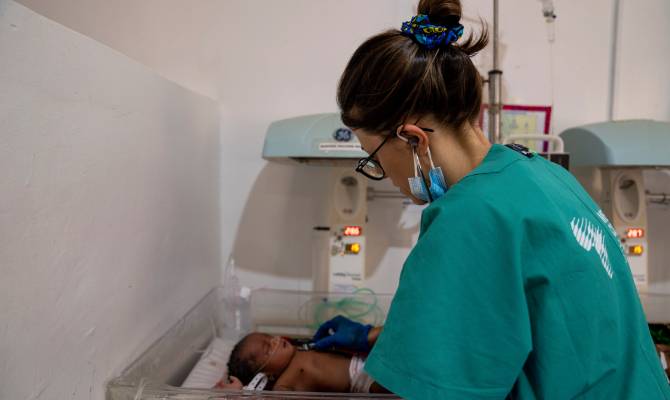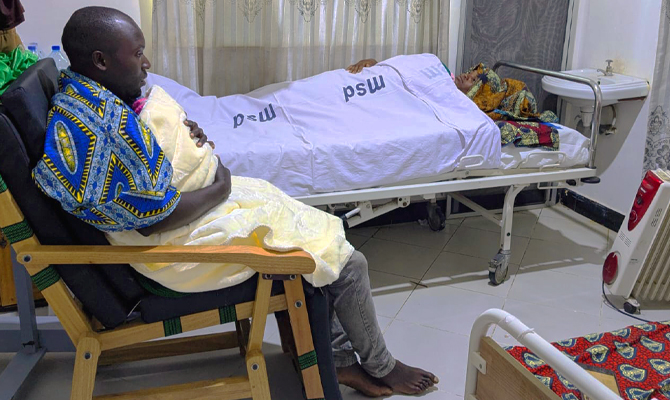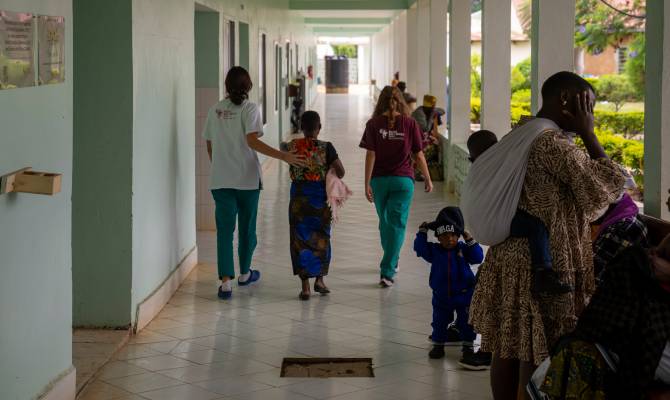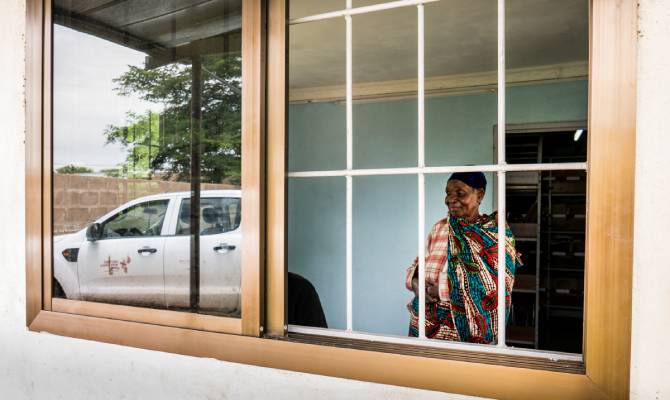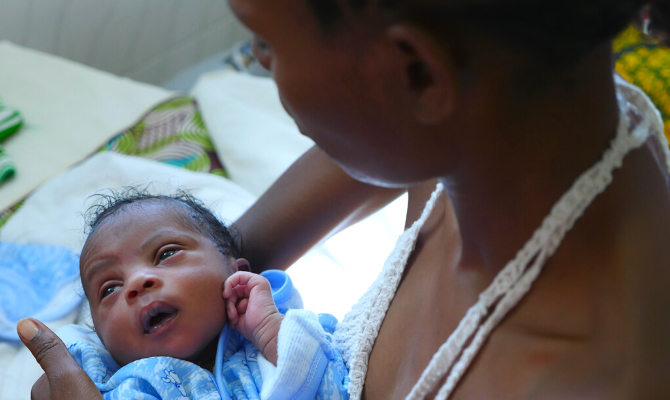A tiny wren. If we were to depict it, give it shape, it would have Baraka’s long eyes and his round mouth.
Baraka was born at the Tosamaganga hospital in Tanzania. A 28-week preterm baby, “the kind you’re never sure your best efforts will be enough for,” confesses Giulia Guerrini – JPO in pediatrics.
“Below 800 g we know very well that premature babies have very low chances of survival,” says Martina Borellini, CUAMM doctor and head of the Tosamaganga NICU. “Here, at the hospital, we have never taken the ending for granted. In fact, it had never happened before that we were able to discharge a patient born under 800 g.”
Tosamaganga hospital is a secondary-level center, a large facility with a well-equipped neonatal intensive care unit (NICU). Three incubators for the most critical patients, a step-down unit for less severe cases, and two spaces for kangaroo care, the skin-to-skin therapy for mothers and babies. In this NICU, about 700 admissions are recorded each year—an enormous number that reflects widespread health issue. The incidence of preterm births in sub-Saharan Africa is in fact roughly double that of Italy. Geography, unfortunately, also affects mortality: data show that over 90% of extremely premature babies (under 28 weeks) born in low-income countries die within the first days of life, whereas in high-income countries the mortality rate is below 10% (WHO, 2023).
Contributing factors include nutritional, environmental, infectious, and genetic conditions, but another important aspect to highlight is access to prenatal care.
“The literature shows us that if a woman carefully and consistently follows her monitoring appointments throughout pregnancy, and if she is followed by a professional midwife who knows her medical history, the risk of preterm birth can be greatly reduced,” says Martina Borellini.
Damalis, Baraka’s mother, faced many risks. Five pregnancies, five hopes, five expectations that for her had ended in five losses. Damalis has a uterine malformation that had never allowed her to carry a pregnancy to term.
“A bicornuate uterus is a condition unfortunately associated with a very high likelihood of obstetric complications, first among them miscarriage. Because of the shape of the uterus, it is difficult for the fetus to grow and develop fully,” explains Giulia Guerrini.
Despite fears and risks little Baraka left Tosamaganga hospital more than two months after birth, —a period marked by careful medical care and extraordinary dedication by his mother.
“It’s hard to say what made the difference,” says Martina Borellini. “Cases like Baraka’s are extremely rare. Probably a combination of factors: the baby’s gestational age, the fact that he was born in a well-equipped hospital, and the early start of kangaroo care from his very first moments of life.”
An unexpected and astonishing ending. A happy ending that, on World Prematurity Day, reminds us all of the importance of promoting access to healthcare and guaranteeing quality care before, during, and after childbirth for the well-being of mothers and children.

